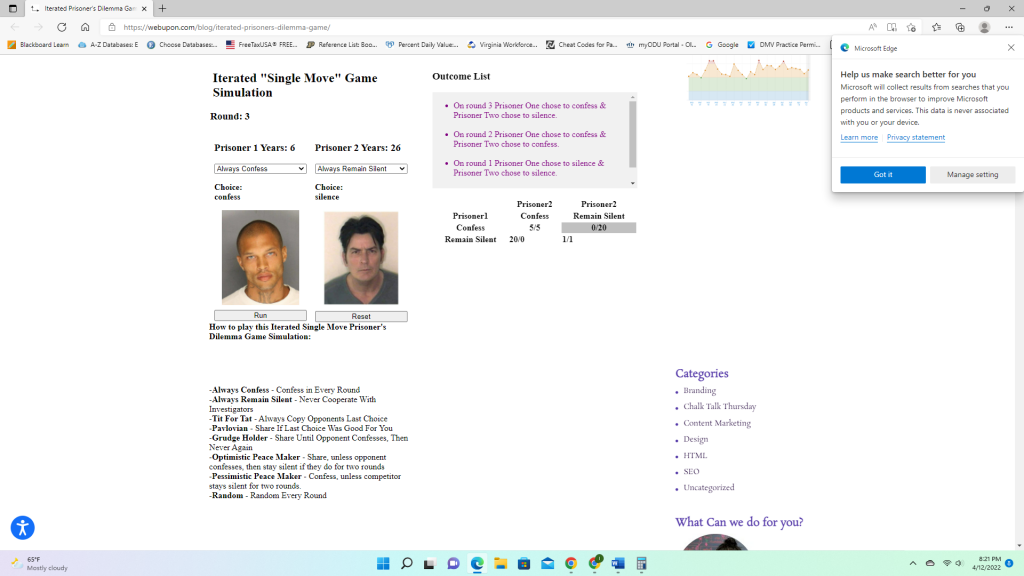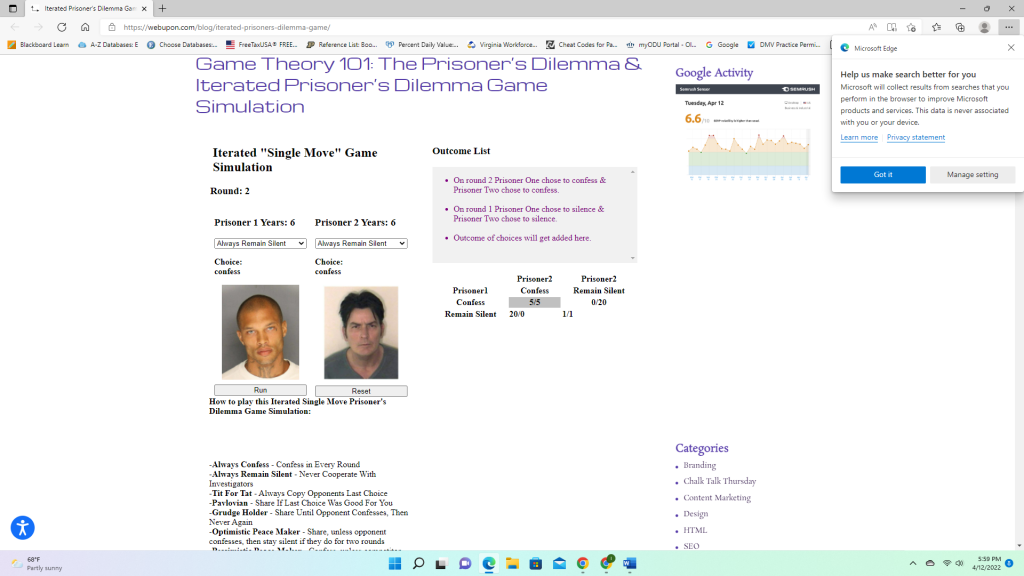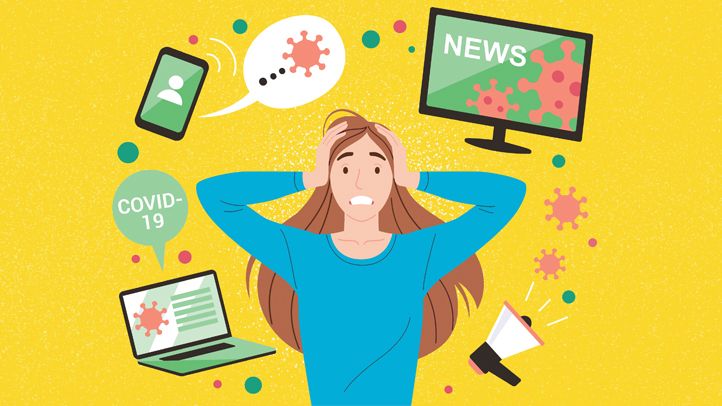Artifact 3
For my top Artifact 3, I chose to look at the Prisoner’s Dilemma activity. This activity is based on the idea of social dilemmas, where individuals may take part in an activity that would not be beneficial for larger groups to perform. The prisoner’s dilemma offers few options that will alleviate the years served in prison but under circumstances where both perform specific actions. The prisoners can either both confess, both stay silent, or one confesses while the other stays silent. Based on these actions, the years spent by each prisoner will be determined.
On this website, there are a total of eight settings for each prisoner and three rounds. This gives about 64 possible combinations of actions and results. I did not have enough time to explore all of the combinations, but I did about 3-4 games of different choices. The main theme is that either one succeeds while the other fails the objective or both prisoners serve time. The outcome is listed under the outcome list and in the table. The result is highlighted in gray.




http://www.iterated-prisoners-dilemma.net/
Artifact 1
For my top Artifact 1, I chose my Item to Archive from Module 4.
This item to the archive was extremely intriguing primarily because I already made observations as to how the news activates the availability heuristic. The availability heuristic is one that uses recent information to make decisions and conclusions on seemingly similar situations. The problem is that this can lead room to bias, as many memories may appear to mean that a phenomenon happens more often than it really does. When on a societal level, this can create room for workplaces, government, and politics to handle policies that are not realistic to the real world.
The news media is extremely influential in how people understand current events. For some, it is the only source of information on almost all topics. I learned from this Item to Archive that the news is a real-world source that is involved with the availability heuristic. I realized how this persuades many people into believing false truths about the world. I also was able to draw the connection that since many people ONLY watch the news without doing their own research, their thoughts on issues are often politicized or extremely opinionated, reflecting the news media.
